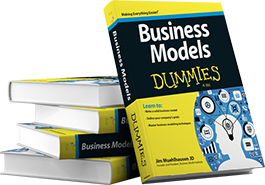Snap-On Tools Destroys its Business Model
Many professional mechanics view Snap-On Tools as the best tools money can buy. A Snap-On wrench or screwdriver can cost five times more than a similar Craftsman model, but professionals swear the extra cost is worth it. According to their website, since 1920, Snap-On’s business model has been:
The tools we sell are the Gold Standard for professionals and recognized as a badge of excellence. They are the résumé for any professional technician.
After 90 years of outstanding brand-building, Snap-On has decided to sell cheap Chinese wares. If you have visited your local Costco, you will find a $19 Snap-On flashlight and multi-wrench tool set. The set looks to be an excellent value with 3 pieces for only $19 retail. In addition, the set bears the Snap-On name. You can also find low-end Snap-On battery chargers, multi-tools, work lights, and knives.
In my mind, the greatest marketing book ever written is The 22 Immutable Laws of Marketing by Al Ries and Jack Trout. Ries and Trout make things perfectly clear: A brand means one thing and one thing only to a consumer. In effect, a brand owns words in your mind. Tide makes a great detergent, not a great foot powder. For many, Tide owns the word detergent. Cadillac makes luxury cars, not $10 skateboards. For many, Cadillac owns the phrase luxury automobile. Snap-On owns the phrase best tools or high quality tools in the minds of professional technicians. By introducing a brand that does not fit the customer’s image of the brand, Snap-On is committing brand and business model suicide.
It is difficult to understand why Snap-On would spend 90 years building one of the top brands in the industry and then self-sabotage its own brand. As the Chinese are looking for ways to exit the low-margin cheap goods market and move upstream to a Snap-On style business model, Snap-On abandons the very position which others envy. A premium set of 14 Snap-On wrenches cost $677.30 vs. a similar set at Sears for $69.99. For most fixer-uppers, the Sears wrenches are more than adequate. However, ask your mechanic if the Sears wrenches will suffice. Look in the shop at his or her toolbox and you will most likely see the Snap-On badge of honor. Professional technicians have had a strong brand loyalty towards Snap-On.
It will be interesting to see if the “we make the best and most expensive tools but also have this cheap stuff” business model will have an adverse affect on the Snap-On business model. The grass always seems greener on the side of customer segments not sold. However, history is full of examples of ill-thought line extensions and brand changes.
Boston Chicken
Boston Chicken was once focused on rotisserie chicken, but then they wanted to expand, so they added turkey, meatloaf and ham to the menu. Then to explain the expanded menu to consumers, they changed the name of their restaurants to Boston Market. Within a couple years, the firm went bankrupt.
New Coke
Old Coke was the top brand but Pepsi still had a large share of the market. In addition, Pepsi seemed to win all the blind taste tests. Coca-Cola decided to chase the Pepsi drinkers by changing formulation to a Pepsi-style taste. Drinkers gave Coca-Cola the message loud and clear, “If we want something that tastes like Pepsi, we will buy Pepsi.”
Digital Equipment
In the 1980, Digital Equipment’s business model was to provide corporations with a line of computers one level below an IBM mainframe. These mini-computers turned DEC into the second-largest computer company, behind only IBM. However, as PC’s gained popularity in the mid-1980s, DEC decided to enter this fast-growing market as well.
Chasing a second market segment may have lead to DEC’s demise as the company was effectively dismantled in 1998. The bulk of the pieces were sold to Compaq for a fraction of their former value.
Miller Lite
In 1973, Miller Beer was the #2 brand in the US. That same year, Miller Brewing Company introduced Miller Lite. Through a series of successful commercials featuring retired sports stars, Miller Lite grew to the #2 brand. However, during that same period, Miller High Life fell off the sales map (not even in the top 20 brands). The Champaign of beers has made a return of sorts. Currently, High Life is the #10 brand in the US. However, Miller has repositioned the brand as a cheaper “Popular” beer vs. its old “Premium” category and price.
Is it me, or does it seem that Miller simply spend tons of money to substitute Lite for High Life as the #2 brand?
So what’s the lesson for your brand and your business model? Massive amounts of time, energy, and money are spent to create a brand promise to your customer. Don’t change that promise simply because the grass looks greener. In this world of excessive competition, less is more. The stronger your focus on your primary branding promise, the more successful your business model.










